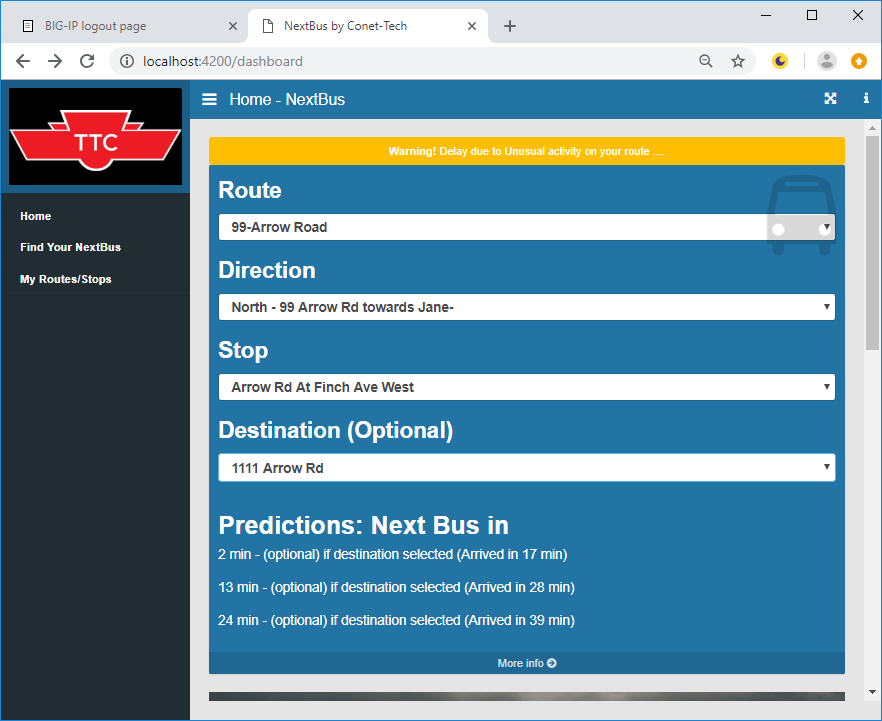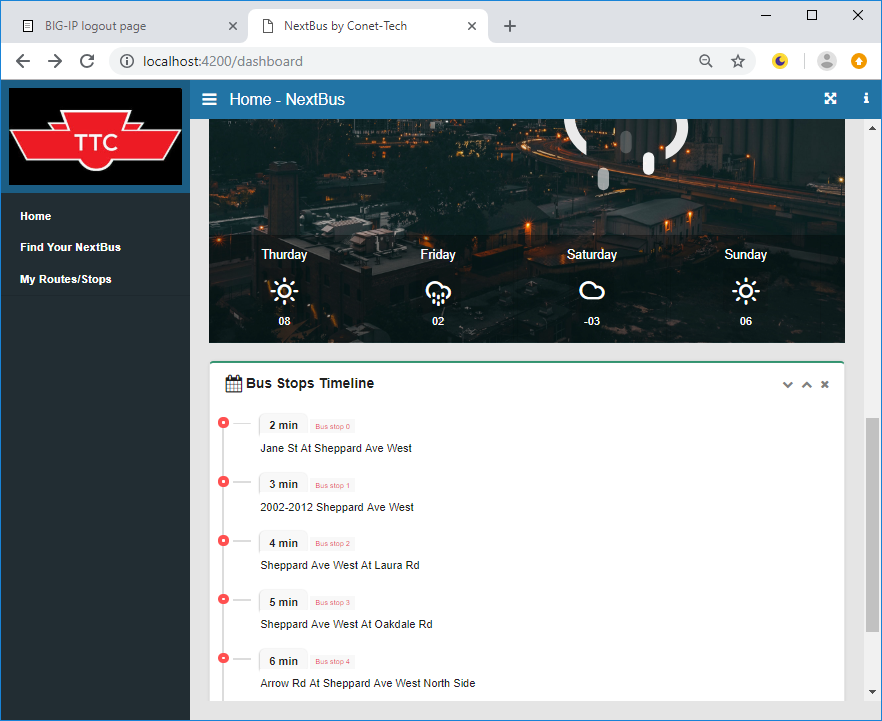Conet TECH
Continental Network Technologies
Case Studies
Conet-Tech Case Studies

Toronto Transit Commission - TTC NextBus
Case Overview
Providing real-time bus arrival information can help to improve the service quality of a transit system and enhance its competitiveness among other transportation modes. Taking the city of Toronto, Canada, as an example, this project focus on one artificial neural network (ANN) models to predict the real-time bus arrivals, based on historical global positioning system (GPS) data and automatic fare collection (AFC) system data. Also, to contend with the difficulty in capturing the traffic fluctuations over different time periods and account for the impact of signalized intersections, this study also subdivides the collected dataset into a bunch of clusters.Customer Overview
The Toronto Transit Commission (TTC) is a public transport agency that operates bus, subway, streetcar, and paratransit services in Toronto, Ontario, Canada. It is the oldest and largest of the urban transit service providers in the Greater Toronto Area, with numerous connections to systems serving its surrounding municipalities. Established as the Toronto Transportation Commission in 1921, the TTC owns and operates four rapid transit lines with 75 stations, over 149 bus routes, and 11 streetcar lines.The TTC is the most heavily used urban mass transit system in all of Canada, and the third largest in North America, after the New York City Transit Authority and Mexico City Metro./. v
The TTC serves the people of Toronto by ensuring your transit system is reliable, safe, and prepared for the future. To that end, the Board oversees matters of policy, planning TTC services; constructing, maintaining and operating the system; and expanding services and facilities.
Business Challenge
Due to the complex relations between bus arrival time and the candidate variables, a basic ANN model was first developed for bus travel time prediction. And the bus arrival time at the downstream stop could be easily computed by the sum of predicted travel time and departure time from the upstream stop.In this project, an ANN architecture with typical three layers (the input layer, hidden layer, and output layer) was rejected. The back-propagation algorithm was applied to optimize weights of the hidden layer with the objective of minimizing the prediction errors, and the transfer function is a sigmoid nonlinear function but the preference was given to HANN Model.


Solution
Given the data analysis, the bus travel time varied over different time periods. Therefore, it was not appropriate to put all the collected data together and form a single prediction model in the ANN model. A better alternative was to separate the problem according to the prediction time. Following this principle, the dataset was subdivided into four groups with respect to weekday a.m. peak hours, weekday p.m.-peak hours weekday off-peak hours, and weekends.
Different segments may experience different delays caused by intersections, and the dataset is further subdivided based on the defined delay level. With the separation of data, a set of SANN models were also developed, each of which corresponds to one divided data cluster. In order to facilitate the predication model, those developed SANN models were further integrated as a HANN model.

Results
The consultants of Conet-Tech studied the characteristics of bus operations, and found some key factors that affect bus arrival times. On the basis of nonlinear properties, the project proposed the artificial neural network model and hierarchical artificial neural network to predict short-term bus arrival times based on available data, which includes four types of variables, namely, time index, the level of bus delay, arrival time, and headway distribution.
Under recurrent traffic conditions, the relative prediction error within a 10 min prediction time window is less than 20% with a reliability probability of more than 85%, while the probability of having more than 40% relative prediction errors is no more than 7%. Most importantly, the proposed method is computation-friendly with a calibration time of less than 2 min, which makes it applicable in a real-time bus arrival prediction system.
The technologies
- Visual Studio .NET and .NET Framework, C#, Angular, HTML5, CSS- Windows Server, SQL Server Enterprise Manager, Business Intelligence, Web API
- Microsoft Project, Visio